Volume 9 | Number 2 | November 2020
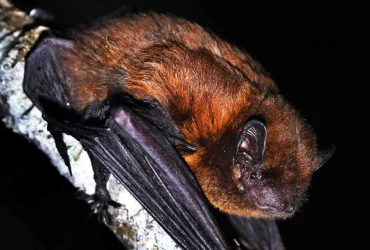 v9i2.242
v9i2.242ISSN: 1800-427X (printed)
eISSN: 1800-427X (online)
DOI:10.47605/tapro.v9i2.242
Submitted date: 05 March 2020
Accepted date: 31 October 2020
Published date: 28 November 2020
Pp. 244–247.
The tallest canopy and the highest carbon stock for a forest stand in Sri Lanka
S.P. Ekanayake* & R.H.S.S. Fernando
*Corresponding author. E-mail: sekanayake@gmail.com
The height of the canopy of a forest has been noted as an important structural parameter in characterizing particular forest types in Sri Lanka. However, only limited studies have been carried out on the carbon stocks of different natural forest types, which is also an important structural parameter of forests. As per the scientific literature mentioned above, the tallest canopy forests are wet zone lowland rain forests in the south western part of the country. The forests are dominated by trees of the family Dipterocarpaceae and reach a maximum canopy height of 45 m. A preliminary botanical survey conducted in the hitherto unexplored Udakeeruwa forest in the eastern intermediate zone climatic zone, in Badulla district, revealed an unusually tall canopy of a natural forest patch dominated by dipterocarp trees.
Section Editor: Gbadamassi G.O. Dossa
eISSN: 1800-427X (online)
DOI:10.47605/tapro.v9i2.242
Submitted date: 05 March 2020
Accepted date: 31 October 2020
Published date: 28 November 2020
Pp. 244–247.
The tallest canopy and the highest carbon stock for a forest stand in Sri Lanka
S.P. Ekanayake* & R.H.S.S. Fernando
*Corresponding author. E-mail: sekanayake@gmail.com
The height of the canopy of a forest has been noted as an important structural parameter in characterizing particular forest types in Sri Lanka. However, only limited studies have been carried out on the carbon stocks of different natural forest types, which is also an important structural parameter of forests. As per the scientific literature mentioned above, the tallest canopy forests are wet zone lowland rain forests in the south western part of the country. The forests are dominated by trees of the family Dipterocarpaceae and reach a maximum canopy height of 45 m. A preliminary botanical survey conducted in the hitherto unexplored Udakeeruwa forest in the eastern intermediate zone climatic zone, in Badulla district, revealed an unusually tall canopy of a natural forest patch dominated by dipterocarp trees.
Section Editor: Gbadamassi G.O. Dossa
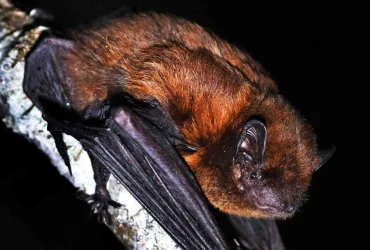 v9i2.241
v9i2.241ISSN: 1800-427X (printed)
eISSN: 1800-427X (online)
DOI:10.47605/tapro.v9i2.241
Submitted date: 15 June 2020
Accepted date: 07 November 2020
Published date: 28 November 2020
Pp. 242–243, Pl. 69.
On a gazelle eating a dove at Dubai Desert Conservation Reserve
P.L. Madurapperuma* & A.A.T. Amarasinghe
*Corresponding author. E-mail: wildmplzoo@gmail.com
The Dubai Desert Conservation Reserve (DDCR) is a 225 km2 natural reserve in the Emirate of Dubai in the United Arab Emirates. It was established in 2002 and comprises some 5% of the Emirate of Dubai's total landmass (DDCR 2020). It is home to many species of fauna and flora, including introduced Arabian mountain gazelles (Gazella gazella).
Section Editor: Lee Harding
eISSN: 1800-427X (online)
DOI:10.47605/tapro.v9i2.241
Submitted date: 15 June 2020
Accepted date: 07 November 2020
Published date: 28 November 2020
Pp. 242–243, Pl. 69.
On a gazelle eating a dove at Dubai Desert Conservation Reserve
P.L. Madurapperuma* & A.A.T. Amarasinghe
*Corresponding author. E-mail: wildmplzoo@gmail.com
The Dubai Desert Conservation Reserve (DDCR) is a 225 km2 natural reserve in the Emirate of Dubai in the United Arab Emirates. It was established in 2002 and comprises some 5% of the Emirate of Dubai's total landmass (DDCR 2020). It is home to many species of fauna and flora, including introduced Arabian mountain gazelles (Gazella gazella).
Section Editor: Lee Harding
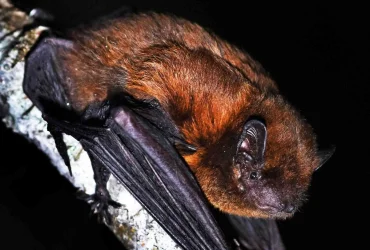 v9i2.240
v9i2.240ISSN: 1800-427X (printed)
eISSN: 1800-427X (online)
DOI:10.47605/tapro.v9i2.240
Submitted date: 30 October 2020
Accepted date: 14 November 2020
Published date: 28 November 2020
Pp. 237–241, Pls. 67–68.
Chocolate pipistrelle (Hypsugo affinis) from Hantana, Sri Lanka, after 87 years
G. Edirisinghe*, S. Akmeemana, S. Yaddehige, D. Gabadage, M. Botejue & T. Surasinghe
*Corresponding author. E-mail: gayan.yza@gmail.com
The Chocolate pipistrelle, Hypsugo affinis, is a comparatively small vesper bat (Chiroptera: Vespertilionidae) distributed in India, central Nepal, southern China, northeast Myanmar and the central highlands of Sri Lanka; its altitudinal range ascends up to 2,000 m a.s.l. In Sri Lanka, it has only been documented at three localities: West Haputale (~1,400 m), Ohiya (~1,700 m) and Nuwara Eliya (~1,900 m), but has not been recorded in the country since 1933. The National Red List for Sri Lanka listed it as Critically Endangered, although H. affinis is listed as of Least Concern in the IUCN Global Red List because of its wide occurrence across southern Asia. Herein we document the first observation of H. affinis from Sri Lanka after 87 years, including the first photographic evidence and the first roosting site observation.
Section Editor: Burton Lim
eISSN: 1800-427X (online)
DOI:10.47605/tapro.v9i2.240
Submitted date: 30 October 2020
Accepted date: 14 November 2020
Published date: 28 November 2020
Pp. 237–241, Pls. 67–68.
Chocolate pipistrelle (Hypsugo affinis) from Hantana, Sri Lanka, after 87 years
G. Edirisinghe*, S. Akmeemana, S. Yaddehige, D. Gabadage, M. Botejue & T. Surasinghe
*Corresponding author. E-mail: gayan.yza@gmail.com
The Chocolate pipistrelle, Hypsugo affinis, is a comparatively small vesper bat (Chiroptera: Vespertilionidae) distributed in India, central Nepal, southern China, northeast Myanmar and the central highlands of Sri Lanka; its altitudinal range ascends up to 2,000 m a.s.l. In Sri Lanka, it has only been documented at three localities: West Haputale (~1,400 m), Ohiya (~1,700 m) and Nuwara Eliya (~1,900 m), but has not been recorded in the country since 1933. The National Red List for Sri Lanka listed it as Critically Endangered, although H. affinis is listed as of Least Concern in the IUCN Global Red List because of its wide occurrence across southern Asia. Herein we document the first observation of H. affinis from Sri Lanka after 87 years, including the first photographic evidence and the first roosting site observation.
Section Editor: Burton Lim
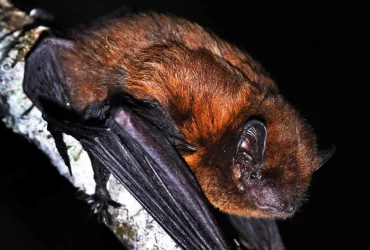 v9i2.239
v9i2.239ISSN: 1800-427X (printed)
eISSN: 1800-427X (online)
DOI:10.47605/tapro.v9i2.239
Submitted date: 12 June 2020
Accepted date: 30 September 2020
Published date: 28 November 2020
Pp. 232–236, Pls. 65–66.
Lesser large-footed Bat (Myotis hasseltii) from Southwest Sri Lanka
G. Edirisinghe*, D. Gabadage, M. Botejue, D. Dissanayake, P. Chandika & T. Surasinghe
*Corresponding author. E-mail: gayan.yza@gmail.com
The Lesser large-footed bat, Myotis hasseltii, is distributed in Sri Lanka, India (West Bengal) and Southeast Asia including Myanmar, Thailand, Cambodia, VietNam, Peninsular Malaysia, Indonesia, and China. Although the Global Red List of IUCN categorized this species as of Least Concern, the National Red List of Sri Lanka lists it as Near Threatened. Myotis hasseltii is a relatively rare bat species in Sri Lanka, and has a patchy distribution there with the few previous locality records coming from the northern, eastern and southern parts of the dry zone of the island. Earlier records of this species are from Anuradhapura, Kappachchi, Kokoputchi, Valaichchenai and Yala National Park, Minipe Canal near Randenigala and Thelgamuwa Oya near Illukkumbura in the Knuckles region. Here, we provide the first record of M. hasseltii from the Southwestern wet zone of Sri Lanka (Sabaragamuwa Province).
Section Editor: Burton Lim
eISSN: 1800-427X (online)
DOI:10.47605/tapro.v9i2.239
Submitted date: 12 June 2020
Accepted date: 30 September 2020
Published date: 28 November 2020
Pp. 232–236, Pls. 65–66.
Lesser large-footed Bat (Myotis hasseltii) from Southwest Sri Lanka
G. Edirisinghe*, D. Gabadage, M. Botejue, D. Dissanayake, P. Chandika & T. Surasinghe
*Corresponding author. E-mail: gayan.yza@gmail.com
The Lesser large-footed bat, Myotis hasseltii, is distributed in Sri Lanka, India (West Bengal) and Southeast Asia including Myanmar, Thailand, Cambodia, VietNam, Peninsular Malaysia, Indonesia, and China. Although the Global Red List of IUCN categorized this species as of Least Concern, the National Red List of Sri Lanka lists it as Near Threatened. Myotis hasseltii is a relatively rare bat species in Sri Lanka, and has a patchy distribution there with the few previous locality records coming from the northern, eastern and southern parts of the dry zone of the island. Earlier records of this species are from Anuradhapura, Kappachchi, Kokoputchi, Valaichchenai and Yala National Park, Minipe Canal near Randenigala and Thelgamuwa Oya near Illukkumbura in the Knuckles region. Here, we provide the first record of M. hasseltii from the Southwestern wet zone of Sri Lanka (Sabaragamuwa Province).
Section Editor: Burton Lim
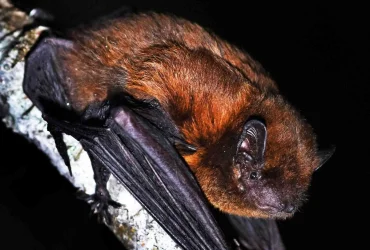 v9i2.238
v9i2.238ISSN: 1800-427X (printed)
eISSN: 1800-427X (online)
DOI:10.47605/tapro.v9i2.238
Submitted date: 5 March 2020
Accepted date: 12 June 2020
Published date: 28 November 2020
Pp. 227–231, Pl. 64.
Round-eared tube-nosed bat (Murina cyclotis) from Southwest Sri Lanka
G. Edirisinghe*, D. Gabadage, M. Botejue, P. Chandika & T. Surasinghe
*Corresponding author. E-mail: gayan.yza@gmail.com
Vesper bats (Family Vespertilionidae) are the most diverse bat family in Sri Lanka, represented by 12 species. The round-eared tube-nosed bat, Murina cyclotis is one of the rarest vesper bats. The species is distributed in South and Southeast Asia, and it belongs to a cryptic species complex. The distribution range of M. cyclotis is patchy and in Sri Lanka it is known only from a few localities. Given its widespread range, it is listed as Least Concern in the International Union for the Conservation of Nature (IUCN) Red List, whereas the National Conservation Assessments of Sri Lanka listed M. cyclotis as Near Threatened (NT). Here, we provide a new site record for this species from southwestern Sri Lanka.
Section Editor: Burton Lim
eISSN: 1800-427X (online)
DOI:10.47605/tapro.v9i2.238
Submitted date: 5 March 2020
Accepted date: 12 June 2020
Published date: 28 November 2020
Pp. 227–231, Pl. 64.
Round-eared tube-nosed bat (Murina cyclotis) from Southwest Sri Lanka
G. Edirisinghe*, D. Gabadage, M. Botejue, P. Chandika & T. Surasinghe
*Corresponding author. E-mail: gayan.yza@gmail.com
Vesper bats (Family Vespertilionidae) are the most diverse bat family in Sri Lanka, represented by 12 species. The round-eared tube-nosed bat, Murina cyclotis is one of the rarest vesper bats. The species is distributed in South and Southeast Asia, and it belongs to a cryptic species complex. The distribution range of M. cyclotis is patchy and in Sri Lanka it is known only from a few localities. Given its widespread range, it is listed as Least Concern in the International Union for the Conservation of Nature (IUCN) Red List, whereas the National Conservation Assessments of Sri Lanka listed M. cyclotis as Near Threatened (NT). Here, we provide a new site record for this species from southwestern Sri Lanka.
Section Editor: Burton Lim
Hubungi Kami
The ultimate aim of the journal is to provide an effective medium for communication of the latest and best scientific information.
Copyright © 2020 Taprobanica. All Rights Reserved
Jasa Pembuatan Website by IKT




